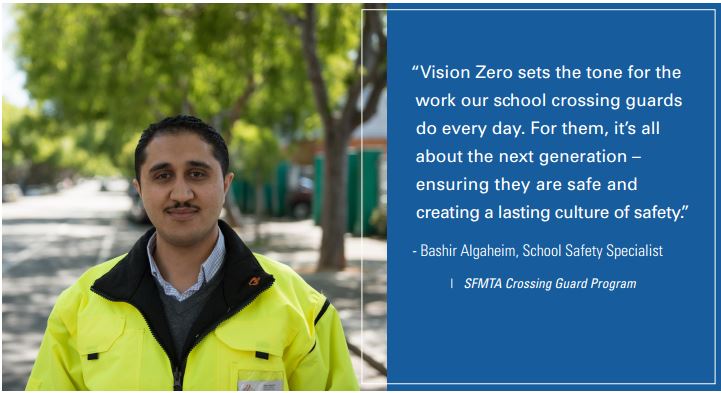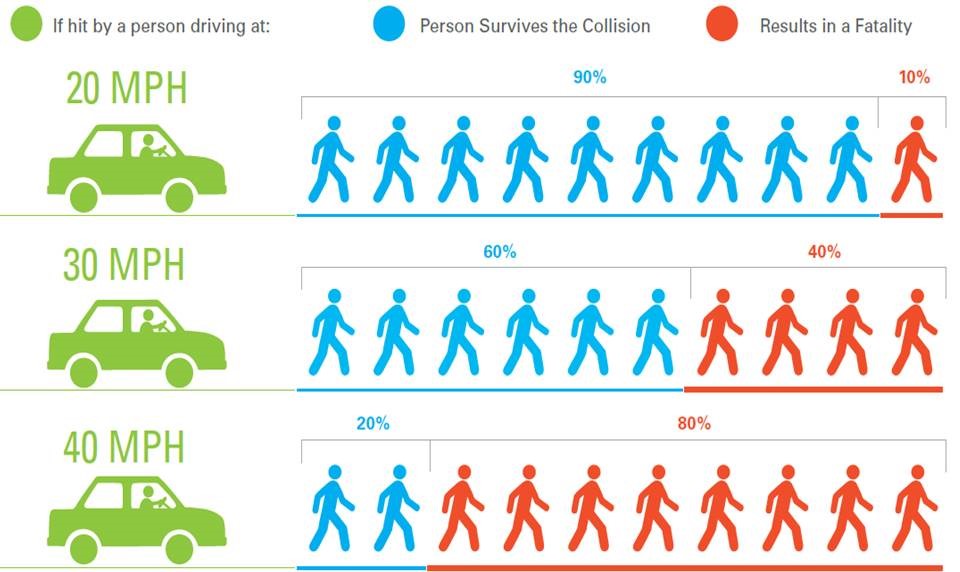By now, you've hopefully heard of Vision Zero — San Francisco's goal to eliminate traffic deaths by 2024. The message is simple: Fatal collisions — not “accidents” — on our city streets are neither acceptable nor inevitable. We all have the power to help change behavior and reduce them to zero.
Support for Vision Zero is growing, but we need to reach more people in the city and around the Bay Area. To get to zero, we need everyone to know that they can make a difference.
Starting today, Vision Zero radio spots will air on Bay Area stations in English and Spanish. Within the next two months, the campaign will increase to raise awareness about the dangers of speeding, bolstered by more targeted education and enforcement by the San Francisco Police Department.
The SFMTA manages a group of 180 school crossing guards across the city to help keep streets around schools safer.
Of course, San Francisco has a long road ahead, and education is just one piece of the puzzle. That's why we’re also installing more and more street engineering improvements, working with our city partners, like the SFPD, to increase data-driven traffic enforcement and leading the push for state legislation to allow automated speed enforcement.
Earlier this month, Mayor Ed Lee issued an executive directive (.pdf) to increase efforts like the new Vision Zero awareness campaign, which he and the Board of Supervisors approved funding for.
Vision Zero has had success in other cities outside the United States that have made serious commitments to the approach in the last couple of decades. Here at home, San Francisco is one of the cities leading the growing U.S. movement.
A key part of that movement is getting drivers to slow down, which is why we're also renewing our messaging focus on speed.
Speed is the biggest factor in whether someone will survive a car crash. The faster we drive, the more likely it is that a mistake will result in a crash - and that the crash will be fatal. As illustrated in the image above, a person walking hit by a car going 30 miles per hour is six times more likely to die than a person hit at 20 mph. But surveys we’ve conducted found that many people are unaware of speed's exponential significance in traffic injuries and admit to speeding regularly.
As we ramp up efforts to spread the word about the dangers of speeding and Vision Zero in the coming months, you may see and hear more of our Vision Zero education campaign through advertisements.
These upcoming efforts are just the latest in the city’s Vision Zero education campaigns, which also include the award-winning Safe Streets ad campaign.
For more information, please visit visionzerosf.org.

